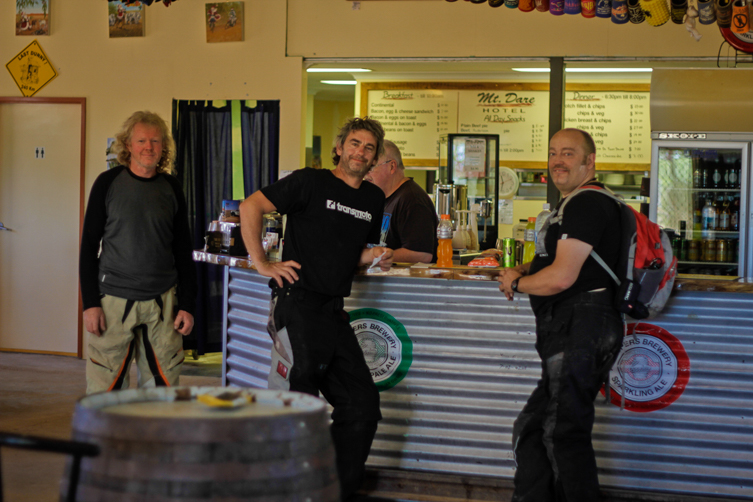FIVE TIPS TO SURVIVE THE SIMPSON
Words: Grant O'Brien | Photos: Grant O’Brien
Words: Grant O'Brien | Photos: Grant O’Brien
Crossing the Simpson Desert in Australia is one of those “Bucket List” rides for adventure riders. From the town of Birdsville following the French Line west to Dalhousie Springs you cross 1100 sand dunes. It’s a super challenging, exhilarating, and at times soul-searching experience that in some cases can go terribly wrong.
I did it unsupported with five mates in 2013, and while we rated it as one of the best adventure rides we’ve ever done, there’s a lot we learned that would make our next attempt a little easier. Here are five tips from experience to help you successfully plan your first attempt at crossing the mighty Simpson.
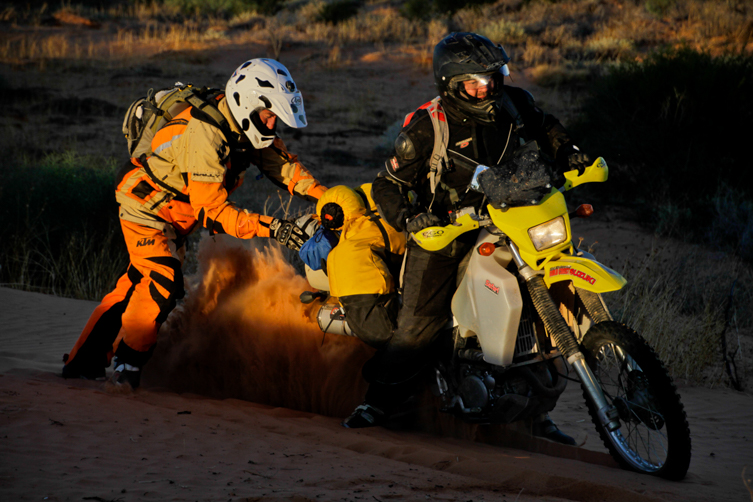
1. PACK LITE
There’s a lot to think about when packing for an unsupported adventure ride, especially when you decide to camp out every night under the stars and avoid the comfort of hotels. The aim is to pack as light as possible, which is very difficult when you need an estimated 45-litres fuel capacity (for a KTM690R) to make it from Birdsville to the next fuel stop at Mount Dare. It’s a lot of weight to start with before adding camping gear, tools, spares, food, first-aid kit, and water. Considering this I found the lightest tent, cooking burner, sleeping bag and mat, took minimal clothing, and packs of dehydrated food for when we entered no man’s land. On the 1800km ride from Northern NSW to Birdsville we’d aim to stop at a town close to dusk, buy a few supplies for the night, then ride out of town and find a camping spot by a river. This saved us having to carry too much food.
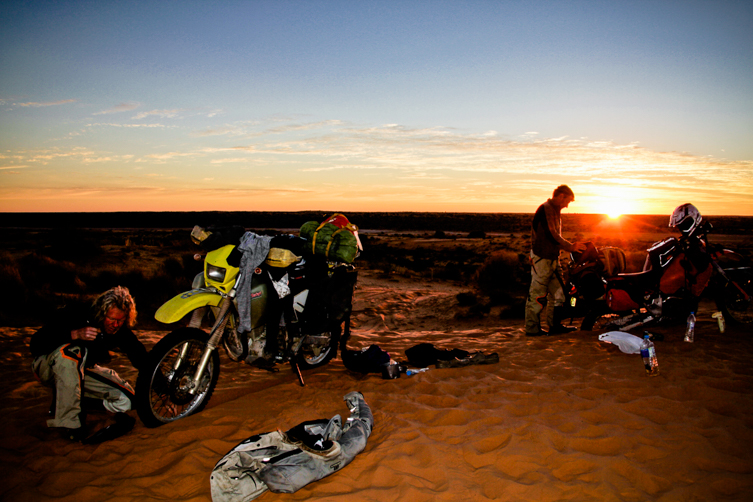
2. PLANNING
We rode into the setting sun on a mission to reach the Birdsville pub before closing. We arrived at 9pm bug-eyed, full of excitement, and preceded to drink way too many beers, and boy did we end up paying for it. If we were smart we would have drunk all those beers and spent the next day recovering and preparing before hitting the first dune the following day at the crack of dawn. So by the time we peeled our dehydrated bodies off our sleeping mats, ate breakfast, packed up camp, fuelled up, stored as much water as we could (min 12-15 litres), we only managed to tackle the first of 1100 dunes by 11am, which is utter stupidity, especially hung-over! Before we knew it the sun was coming over us and beating down harder than Mike Tyson, and once you’re out in the Simpson Desert it doesn’t take long to realise that water is your best friend, and you’ll need more than you think. Plan right, be smart and push harder in the coolest part of the day to conserve energy.
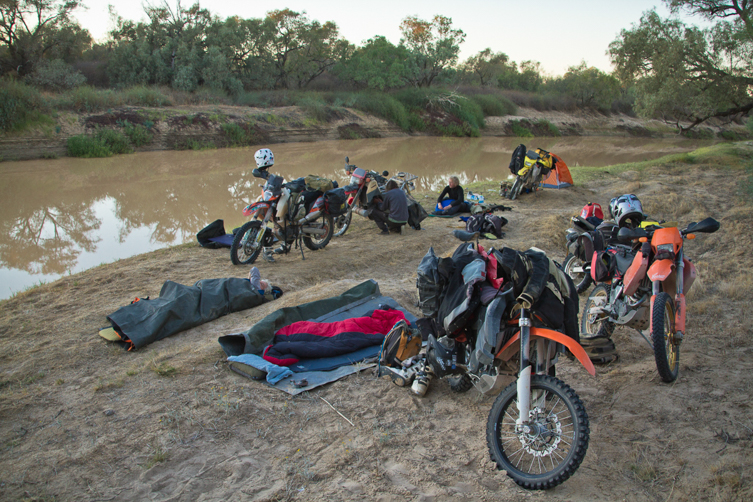
3. HYDRATION
Riding sand isn’t easy at the best of times, and then throw on top an extra 70-odd kilos of weight fully loaded … faark! You really have to find your flow and not fight the bike as once you start crashing the confidence goes and things turn south real quick. My mate Jono had never ridden sand before in his life so I had to help him up a few of the bigger dunes on the first day when he hit the wall. He cramped up and couldn’t ride further than the 150km mark so luckily I had electrolytes to help him ease the cramps overnight. It was my packs of electrolytes that actually helped us all endure the heat and exhaustion we felt on the second day trying to make up time as we had no choice but to make it to Mt Dare for water. Personally, I’ve never felt so desperate for water as I did the end of that second day crossing the Simpson, and if it wasn’t for the electrolytes to replace the salts I’m not sure how I would have made it. Once again it comes back to planning, things would have been easier if we made the most of that first day riding without a hangover. Try to conserve water as much as possible by taking smaller sips regularly over big gulps every half hour or so, and take electrolytes!
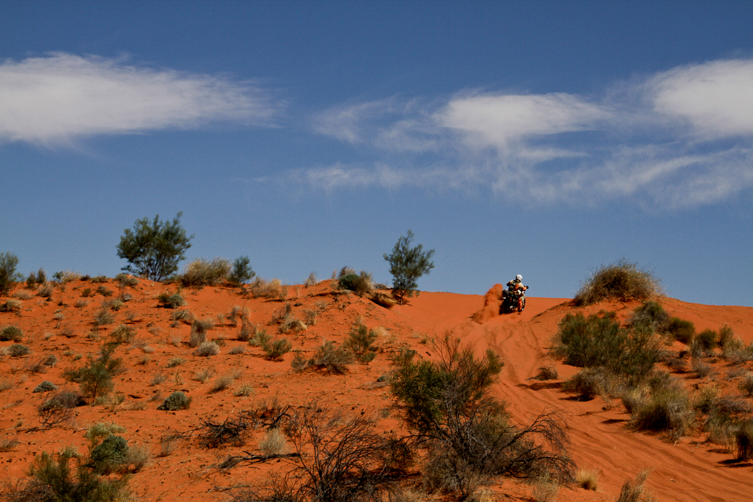
4. SAFETY
Before departing on this adventure ride we’d heard all kinds of stories about riders being stranded in the middle of the desert with a broken leg or some kind of injury waiting hours to be rescued. It’s the worse case scenario, and one that sits in the back of your mind while navigating those endless soft dunes. Naturally, we spread out during the ride, but at most times we’d split into groups of two, and whoever was in front would pull up every hour and wait for the group to bunch up to check no one was in trouble. Mobile phones don’t work out there, and we didn’t have CB radios, but we did have a PLB (personal locator beacon) we could use to notify search and rescue services if one of us was seriously injured. We all had a first-aid kit for minor injuries, but other than that we just trusted our own abilities as riders and went for it. Oh, and make sure you have a good headlight for any night riding!
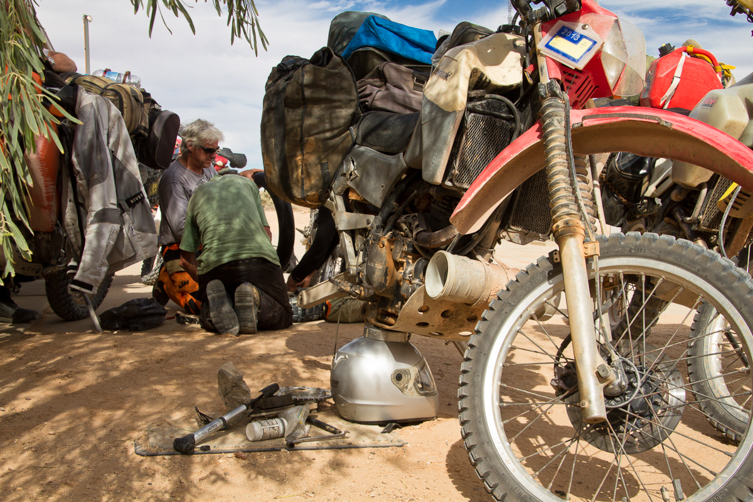
5. MAINTENANCE
Knowing your own bike really well is a must when heading out into the great unknown as it can be the little things that can let you down and ruin your adventure. New chain and sprockets is a must, as is fresh engine oil and filters, plus check wheel bearings, spokes, add quality tyres with hard walls and heavy-duty tubes to help avoid punctures, and check over all nuts and bolts. All the usual things, but you’d be surprised how many riders forget to do one thing or another and end up broken down on the side of the track. Besides the necessary tools I also took an assortment of nuts and bolts, zip-ties, spare tubes, puncture kit, spare air-filter, tow rope, items I know would get me out of trouble if it called. Every rider and bike are different, just tune in to yours well before departing to ensure it will get you to the other side for an icy cold beer as it will be the best one you’ve ever tasted, believe me.
